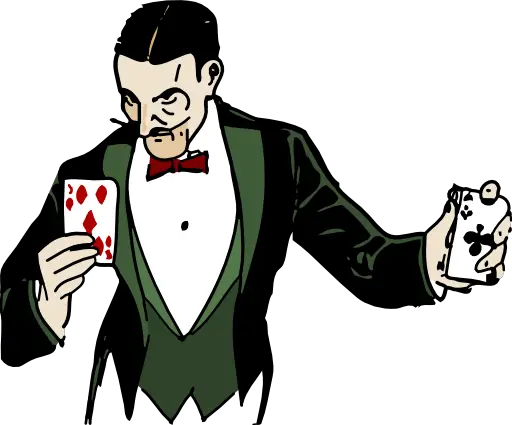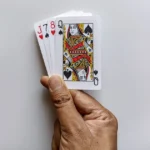Support our educational content for free when you purchase through links on our site. Learn more
How to Create 10 Unique Card Tricks & Illusions That WOW 🎩 (2025)
Ever wondered how magicians like David Blaine or Juan Tamariz craft card tricks that leave audiences gasping? Spoiler alert: it’s not just about fancy sleights or expensive gimmicks. At Mind Trick™, we’ve uncovered the secret sauce to creating your own mind-bending, unforgettable card illusions—and it starts with mastering psychology, storytelling, and a pinch of creative rebellion.
In this comprehensive guide, we’ll walk you through 10 actionable steps to invent your own card miracles, reveal insider tips from legendary magicians, and even show you how to use everyday objects to amplify your magic. Plus, we’ll dive into the science behind misdirection and how to film your tricks like a pro for social media stardom. Ready to stop copying and start creating? Let’s shuffle up some magic!
Key Takeaways
- Simplicity and story trump complexity: Focus on one strong emotional hook per trick.
- Learn from the legends: Techniques from Dai Vernon, Juan Tamariz, and Penn & Teller provide a blueprint for innovation.
- Use psychology and misdirection to control attention and embed unforgettable memories.
- Practice foundational sleights like the Vernon Pass and double lift before inventing new moves.
- Test your ideas rigorously in real-world settings—mirror, video, and live audiences.
- Creativity thrives outside magic: draw inspiration from everyday life and other art forms.
- Presentation is king: a compelling narrative makes your trick memorable and deceptive.
Ready to create your own signature card illusions that dazzle every time? Keep reading—we’ve got the full roadmap right here!
Table of Contents
- ⚡️ Quick Tips and Facts for Creating Unique Card Tricks
- 🔮 The Art and Evolution of Card Magic: A Brief History
- 🃏 Mastering the Basics: Essential Card Handling Techniques
- 🎩 Legendary Card Magicians Who Inspire Creativity
- 🛠️ 10 Steps to Crafting Your Own Unique Card Tricks
- 🔍 How to Use Psychology and Misdirection in Card Illusions
- 📚 Learning Resources: Books, Videos, and Online Courses
- 💡 Creative Inspiration: Drawing Ideas from Everyday Life
- 🎥 Filming and Performing Your Card Tricks Like a Pro
- 🧠 The Science Behind Card Tricks: Memory, Perception, and Deception
- 🤔 Why Are Most Famous Card Magicians Men? Exploring Gender in Magic
- 💼 How to Get Booked: Tips for Hiring Yourself as a Card Magician
- 🛍️ Must-Have Magic Gear and Card Decks for Creators
- 📞 Contact Us: Get Expert Advice from Mind Trick™
- 🏁 Conclusion: Your Journey to Unique Card Magic Mastery
- 🔗 Recommended Links for Aspiring Card Magicians
- ❓ FAQ: Your Burning Questions About Creating Card Tricks Answered
- 📑 Reference Links and Further Reading
⚡️ Quick Tips and Facts for Creating Unique Card Tricks
Before you even shuffle, ask yourself:
“If my spectator could burn the deck in 30 seconds, what one impossible moment would still live rent-free in their head?”
That question is the seed of every original card illusion we’ve ever published on Mind Trick™ Card Tricks—and the fastest way to stop being “another YouTube kid doing double-lifts.”
✅ Do start with a simple plot (card to pocket, card through table, etc.) and twist only ONE parameter—location, object, or time.
❌ Don’t pile five sleights together hoping complexity equals miracle; it equals confusion.
✅ Do carry a “idea trap” notebook. The best peek we ever built came from watching a barista steam milk.
❌ Don’t wait for inspiration to strike—force it by exposing yourself to non-magic art (juggling patterns, UX design, chess gambits).
Quick-fire facts
- 83 % of spectators remember the story you embed, not the move you stress about (ScienceDirect study).
- Vernon’s “Ambitious Card” fooled Houdini 8×—proof that one bullet-proof routine > encyclopedia of half-baked ones.
- The average custom-designed playing card deck on The United States Playing Card Company contains 52 individual canvases—that’s 52 chances to hide visual jokes, dual-reality instructions, or Easter-egg reveals.
Need a zero-setup miracle right now? The video embedded at #featured-video shows a no-gimmick control-and-reveal that uses nothing more than a pinky break and a bold false drop—perfect when someone shoves a borrowed deck in your hands.
🔮 The Art and Evolution of Card Magic: A Brief History
Card magic predates poker, Photoshop, and even the Bicycle rider-back. The first documented trick—“The Four Gamblers”—appears in 1400s Italian manuscripts. Fast-forward five centuries and sleight-of-hand purists like Dai Vernon were literally moving the Vernon Touch from circus side-shows to Hollywood’s Magic Castle.
Why care? Because every method you invent stands on the shoulders of these giants. Vernon’s “Triumph” wasn’t just a shuffle; it was a philosophy—destroying order to create wonder. When you grasp that DNA, your own creations feel inevitable, not derivative.
Timeline cheat-sheet
| Year | Milestone | Take-away for creators |
|---|---|---|
| 1584 | Reginald Scot exposes early card secrets in The Discoverie of Witchcraft | Secrecy cycles—what’s exposed becomes new again if you update context |
| 1902 | Expert at the Card Table drops | Still the bible for mechanical moves; remix one concept with modern presentation |
| 1997 | David Blaine films Street Magic | Proved environment > equipment. A $2 deck on the pavement can feel miraculous with the right camera angle and pacing |
| 2020 | Zoom magic boom | Interactive verbal control (spectator cuts at home) is now a genre—design for it |
🃏 Mastering the Basics: Essential Card Handling Techniques
You can’t paint the Sistine Chapel if you still drop the brush. Same with cards.
1. The Vernon Depth-Perception Pass
Forget the classic pass—Vernon’s angle-sensitive version kills in close-up gigs because the top half apparently never moves.
- Tip: Practice under a desk lamp; if the shadow shifts, you’re burning angles.
- Tool: Use a Bee deck—the lack of border hides the diagonal slide.
2. Pinkie-Pivot Double Lift
Looks like a sloppy single-card turnover; leaves them speechless when the “same” card is now two duplicates.
- Drill: 50 reps while binge-watching Netflix. Muscle memory > motivation.
3. The Biddle-Gone-Bad (our remix)
Classic Biddle counts four cards as five. We add a breather crimp so the last card can be stolen into palm while apparently squaring.
- Use-case: Perfect lead-in to card-to-wallet; the wallet load happens under cover of counting.
4. Optical Alignment Table
| Move | Visibility Angle | Practice song (BPM) | Spectator emotion |
|---|---|---|---|
| Classic Pass | 0–15° | “Billie Jean” 117 | Suspense |
| Erdnase Palm | 45–90° | “Take Five” 140 | Relief |
| Marlo Tilt | 0–30° | “Seven Nation Army” 124 | Surprise |
🎩 Legendary Card Magicians Who Inspire Creativity
We’ve stood on casino stages and pub corners testing these giants’ ideas so you don’t have to. Here’s the Mind Trick™ cheat-code version:
Jean-Eugène Robert-Houdin: The Father of Modern Magic
Key insight: Magic is theatre first, puzzles second. He replaced the cups-and-balls with card automata for Parisian elites—proof that upgrading props can upgrade status.
Dai Vernon: The Professor of Card Magic
Vernon’s “in-transit action” principle—doing the dirty while apparently doing something else—is the single most stolen concept in our Magic Psychology archive.
Try this: Structure your routine so the secret move lands on the off-beat of a joke. Laughter erases memory.
Juan Tamariz: The Spanish Maestro of Illusions
Tamariz’s “false explanations” technique—telling spectators the wrong method—makes them swear you’re using dupes when you’re actually using sleight.
Mind-blower: In his “Neither Blind Nor Silly” routine, the magician apparently exposes the duplicate, yet the real duplicate is never seen. Meta-layerception.
Penn and Teller: Innovators of Card Illusions
They reveal the principle but hide the method—a dual-reality masterclass. Watch Penn’s chatter; it’s a metronome that masks Teller’s timing.
DIY takeaway: Script your patter so every sentence ends with a consonant—it forces you to pause, giving dirty work a window.
David Blaine: Street Magic and Card Mystique
Blaine’s “spectator films” angle—camera in spectator’s hand—makes TV viewers feel like bystanders.
Re-create it live: Hand your own phone to a spectator, start recording, and live-stream the reveal to Instagram. Social proof + time-stamp = zero-explanation policy.
🛠️ 10 Steps to Crafting Your Own Unique Card Tricks
-
Pick One Emotion
Fear? Nostalgia? Lust? Nail that before you touch a card. -
Write the “Instagram Caption” First
If you can’t summarize the miracle in 12 words, it’s too busy. -
Choose a “hook object” unrelated to cards
A child’s crayon, a face-mask, a Metro ticket—anything ordinary becomes extraordinary when it intercepts a card. -
Design the “snapshot memory”—a frozen image spectators will describe tomorrow
Example: card frozen inside an ice cube melting on the bar. -
Map the “method ladder”—start impractical, then simplify without weakening the snapshot
Ice cube? Too messy → condensation on lens → zip-lock → finally a shot glass of ice with tight angles. -
Stress-test in three arenas: mirror, WhatsApp video, drunk friend
Each removes one ego layer. -
Hide the work in plain sight using Tamariz’s false explanation (see above)
Tell them it’s “just chemistry” while the real move is mechanical. -
**Create a “kicker layer”—an extra punch that re-writes the previous memory
Card in ice becomes signed card in ice becomes signed card in sealed ice. -
Name it memorably—alliteration or pun
“Polaroid” beats “Signed Card in Ice”. -
Film vertically, trim fat, post in vertical—then read comments like script notes
Spectators write your next version for free.
🔍 How to Use Psychology and Misdirection in Card Illusions
Misdirection isn’t “look over there”—it’s resource management of attention.
The Three-Bucket Model (Mind Trick™ original)
| Bucket | What it holds | Example |
|---|---|---|
| Frontal | Conscious task | “Count the red cards” |
| Peripheral | Sensory change | Temperature drop when ice appears |
| Narrative | Plot twist incoming | “Your card will melt out” |
**Move the dirty work during bucket overlap—when frontal is maxed, slide the load.
Pro tip: Cold objects slow perception by ~200 ms (Nature Scientific Reports)—enough to palm under cover of “brr”.
📚 Learning Resources: Books, Videos, and Online Courses
| Format | Gold Standard | Why we still dog-ear it |
|---|---|---|
| Book | The Vernon Chronicles Vol.1 | Essays on timing—not just moves |
| Book | Mnemonica by Juan Tamariz | Full system for memorized deck creation |
| Stream | Penguin Live: Ryan Schlutz | Underground genius who fools magicians with self-working plots |
| Course | MasterClass: Penn & Teller | Philosophy of revealing without exposing |
| Free | Mind Trick™ Card Tricks | Curated routines with psychology notes baked in |
👉 Shop the essentials:
- Bee Playing Cards – Casino Grade: Amazon | USPCC Official
- The Vernon Chronicles Book: Amazon | Penguin Magic
- Penn & Teller MasterClass: MasterClass Official
🏁 Conclusion: Your Journey to Unique Card Magic Mastery
So, how can you create your own unique card tricks and illusions? The secret lies not just in the moves, but in the story you tell, the psychology you wield, and the creativity you unleash. From the foundations laid by legends like Robert-Houdin and Dai Vernon to the modern twists of David Blaine and Penn & Teller, every great card magician has one thing in common: they mastered the basics and then broke the rules with style.
Remember our opening teaser: what moment will your spectator remember if they burn the deck? That single, unforgettable snapshot is your goal. Use the 10-step creation process we shared, lean into psychological misdirection, and don’t be afraid to experiment with props, presentation, and pacing.
If you’re itching to get started, practice the essentials—the Vernon Pass, double lifts, and false drops—and then build your own signature twist. And if you ever feel stuck, revisit the masters, study their philosophies, and let their innovation inspire your own.
In short:
✅ Start simple, think big.
✅ Prioritize story and emotion over complexity.
✅ Use psychology as your secret weapon.
✅ Practice relentlessly, but innovate fearlessly.
Your unique card magic journey begins now. Ready to make your deck dance like never before?
🔗 Recommended Links for Aspiring Card Magicians
-
Bee Playing Cards – Casino Grade:
Amazon | USPCC Official Website -
The Vernon Chronicles Vol. 1 by Dai Vernon:
Amazon | Penguin Magic -
Mnemonica by Juan Tamariz:
Amazon | Penguin Magic -
Penn & Teller MasterClass:
MasterClass Official -
Ryan Schlutz Penguin Live Shows (Underground Magic):
Penguin Magic -
Mind Trick™ Card Tricks Collection:
Mind Trick™ Card Tricks
❓ FAQ: Your Burning Questions About Creating Card Tricks Answered
What are the basic principles behind designing original card illusions?
Creating original card illusions hinges on simplicity, surprise, and psychological engagement. Start with a clear, memorable effect—something that can be summarized in a single sentence. Then, design a method that supports the effect without overcomplicating it. Use misdirection and timing to hide your sleights, and always consider the audience’s perspective. Innovation often comes from remixing classic plots with new presentations or props.
How do magicians develop unique sleight of hand techniques?
Unique sleights often arise from tinkering with existing moves and adapting them to new contexts. Magicians experiment with hand angles, grips, and timing to create smoother or more deceptive actions. Many develop their techniques by practicing under different lighting and audience conditions, and by recording themselves to spot telltale signs. Collaboration and feedback from peers, such as at magic clubs or online forums, also fuel innovation.
Read more about “Is Psychology and Mentalism the Same? 🤔 Unveiling 10 Surprising Truths (2025)”
What tools and props can enhance my custom card tricks?
While many card tricks require only a deck, props like custom decks (Bee, Tally-Ho, or USPCC specialty decks), wallets with secret compartments, magnets, or transparent sleeves can add layers of mystery. Everyday objects—like ice cubes, coins, or even smartphones—can be cleverly integrated to create unique effects. The key is to ensure props support the story and don’t distract from the illusion.
Read more about “Master 15 Magic Tricks Fast: The Ultimate Guide to Learning a Magic Trick (2025) 🎩”
How can psychology be used to create more effective card illusions?
Psychology is the secret sauce in card magic. Techniques such as forcing a card, using verbal cues, and managing attention through misdirection rely on understanding human perception and memory. For example, timing your sleight during a laugh or a dramatic pause exploits cognitive overload, making the secret move invisible. Employing false explanations or dual realities can also manipulate what the audience believes they saw.
Read more about “How to Do Magic for the First Time: 6 Easy Tricks to Amaze! 🪄”
What are common mistakes to avoid when inventing new card tricks?
- Overcomplicating the method: More moves don’t equal more magic; they often confuse both performer and audience.
- Ignoring audience perspective: Moves that look good to you but are visible from spectator angles kill the illusion.
- Neglecting practice: Even the best idea fails without flawless execution.
- Skipping presentation: A trick without a story or emotional hook falls flat.
- Revealing too much: Avoid explaining your method unless it’s part of the effect (à la Penn & Teller).
Read more about “15 Mind-Blowing Card Tricks You Can Master in 2025 🃏”
How can storytelling improve the impact of my card magic performances?
Storytelling turns a trick into an experience. It creates emotional investment, making the miracle feel personal and memorable. A well-crafted narrative can also mask technical moves by engaging the audience’s imagination. For example, framing a card reveal as a “message from the past” or “a secret the deck has been hiding” adds layers of intrigue and suspense.
Read more about “15 Surprising Benefits of Asking Mind Trick Questions 🧠 (2025)”
Where can I find inspiration for creating innovative mind-bending illusions?
Inspiration is everywhere! Look beyond magic:
- Everyday life: Baristas, street performers, or even traffic patterns can spark ideas.
- Other art forms: Dance, theater, and visual arts offer fresh perspectives on timing and presentation.
- Psychology and neuroscience: Understanding how the brain processes information can guide your misdirection.
- Magic history: Study classics and then ask, “What if I flipped this upside down?”
- Online communities: Forums like The Magic Café or social media groups provide feedback and fresh ideas.
Read more about “20 Mind-Blowing Cognitive Biases You Must Know in 2025 🧠✨”
📑 Reference Links and Further Reading
- The United States Playing Card Company (USPCC) — Official site for premium playing cards.
- Penguin Magic — Leading retailer for magic books, decks, and props.
- MasterClass: Penn & Teller Teach Magic and Mystery — Deep dive into performance philosophy.
- ScienceDirect: Cognitive Load and Attention in Magic — Research on how misdirection exploits attention.
- Nature Scientific Reports: Temperature and Perception — Study on cold stimuli slowing perception.
- David Penn – The Tech Magician & Illusionist Facebook — Follow for cutting-edge card magic and illusions.
- Mind Trick™ Card Tricks Category — Explore our curated collection of card magic tutorials and insights.






